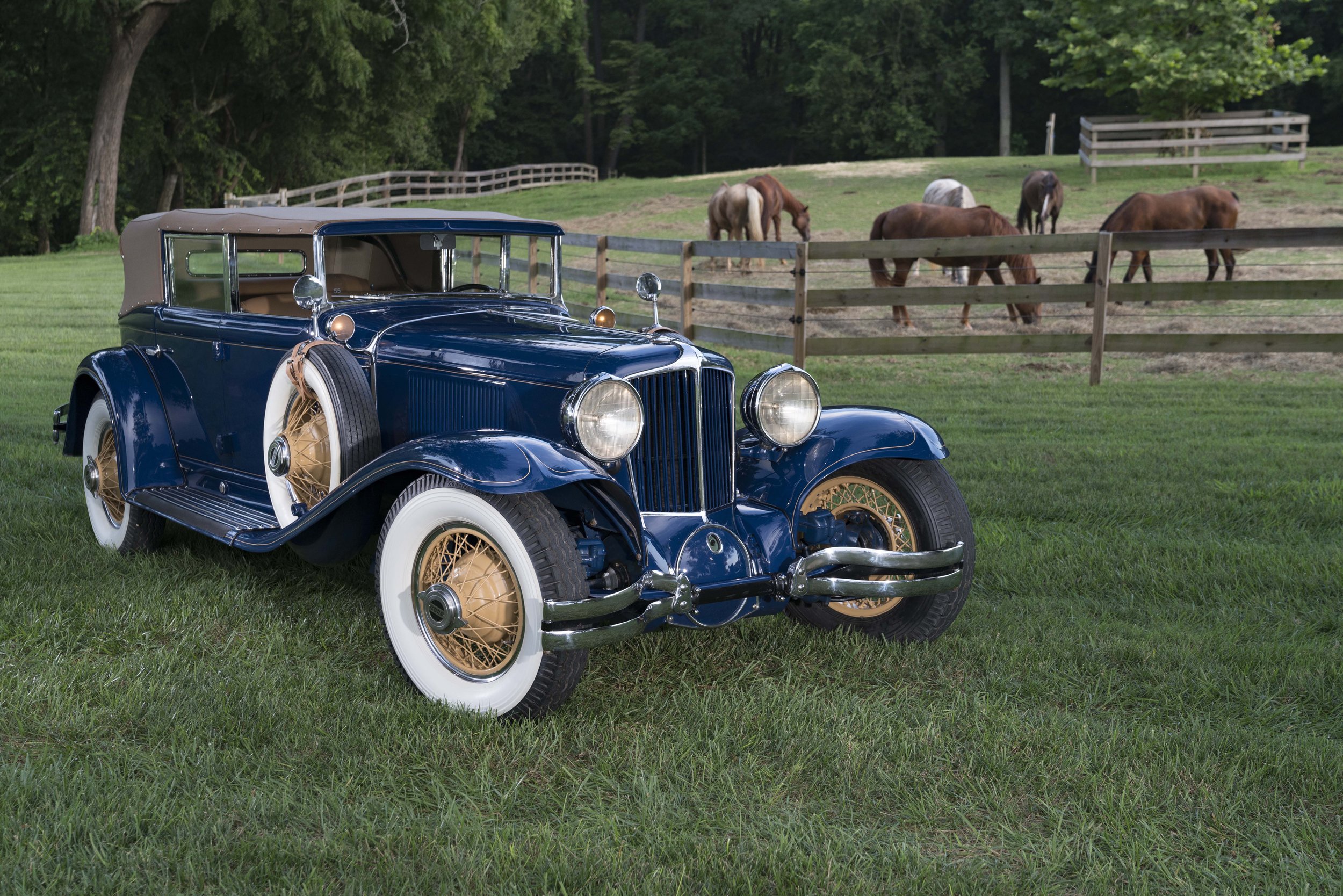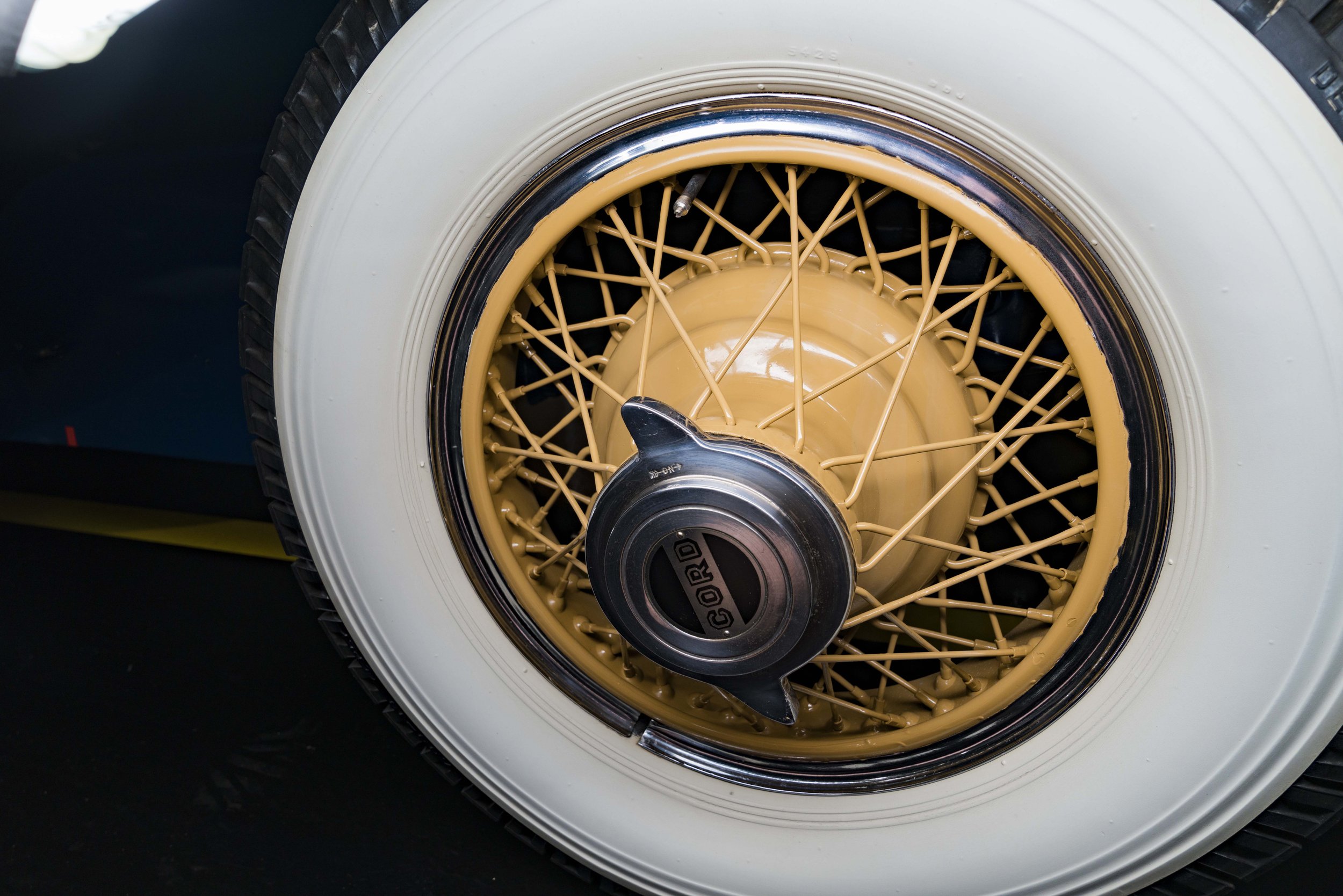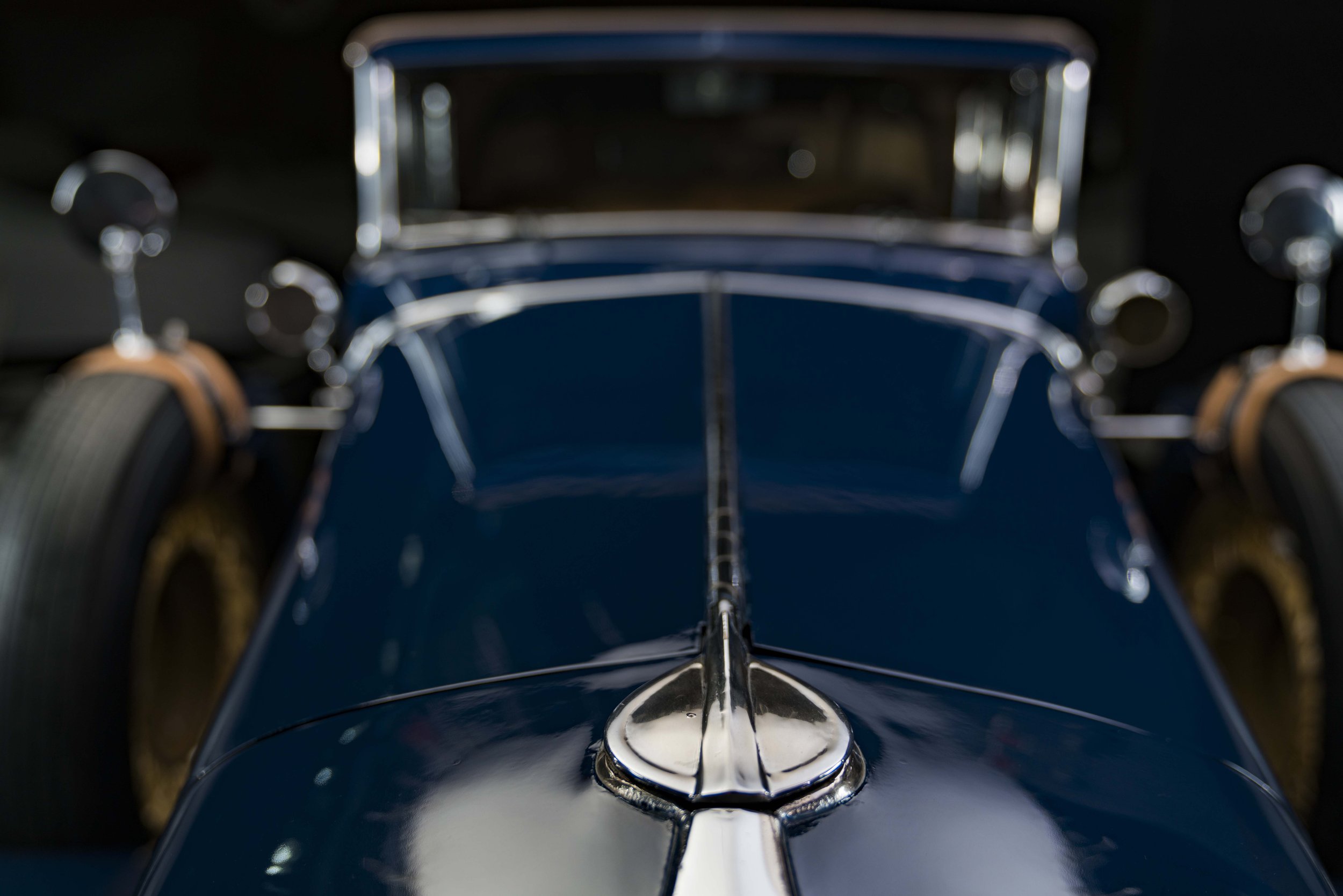1930 Cord L29 Phaeton





First successful American production front-wheel drive car, allowed for lower center of gravity and better handling
Drive system resulted in lower total height and increased interior space
Layout influenced by Miller Indianapolis 500 racecars
The project of successful business owner and racing fan, Errett Lobban Cord, his creation was intended to compete with the Packards, Cadillac and Stutz of its period, big statement automobiles for wafting among the crowd of more commonplace cars. While acting as a space filler between his Auburn and Duesenburg lines in size, power and price, Cord was optimistic he had a success. Combining classy coach built looks made to owner specifications, clever packaging with emphasis on passenger comfort and race car influences tested and engineered throughout, the recipe was all there.
At the time, the 125hp 298 cu inline eight was known to be lethargic, only able to reach 80mph, not helped by the 4700lb curb weight. Regardless, a Cord Cabriolet was the pace car for the 1930 Indianapolis 500 race, both great advertising for the brand and portraying the car’s “sporty” intentions. Helped by the engine and transmission being mounted low in the body, bolted to a Van Ranst designed X brace chassis frame (a world first), customers were rewarded with a completely flat passenger floor, although a side effect being low traction, and handling was said to be “lively” for such a large car. That characteristic could be due to the fact the L’29 was the first major production car with a front wheel drive configuration and constant velocity joints, both unheard of for a car in this class. Stopping power was also unique for a road car in that it borrowed from Indi racers their hydraulic four- wheel drum brakes, inboard at the front. And to keep mechanicals in check the L’29 also had full instrumentation including: temp, oil, speed, gas and pressure. Influenced by Cord’s fascination with the performance of the Junior Special 8 race car. He acquired the rights to Harry Miller’s designs in 1926 with the first prototypes ready for testing in November 1927 by then Chief Engineer Fred Duesenburg. By 1929, the L’29 was ready for its debut.
The Cord was intended to be a luxurious, sporty and beautiful, and on most fronts it was a success. It had innovations such as the front wheel drive layout and chassis design showing the forward thinking and aspirations of the company while standing out from the competition. Important, wealthy customers, including famed architect Frank Lloyd Wright, all over recognized the brand for what it was, and current auction values and museum appearances justify the vision of Mr. Cord and what the brand was to be. Had the car been engineered earlier the sales potential was certainly there with their target audience. Unfortunately, Cord’s timing could not have been worse, the L’29’s launch came right at the beginning of The Great Depression. The L’29, priced at $3,095-3,295 (around $48,000 today) was simply too much for the struggling American market. Futile attempts to draw people back in with price cuts and improved mechanics meant the L’29 had a premature demise. Around 5000 were sold between 1929-1932 in either sedan brougham, convertible coupe and phaeton, with around 300 said to exist today, often known to be proudly displayed at prestigious car shows around the world.
Specifications:
Engine: 298 C.I. Inline-Eight Cylinder
Horsepower: 120 @ 3400 RPM
Top Speed: 77 MPH
Transmission: Three-Speed Manual
Weight: 5000 lbs.

